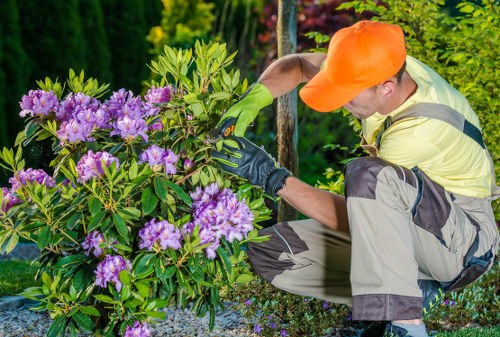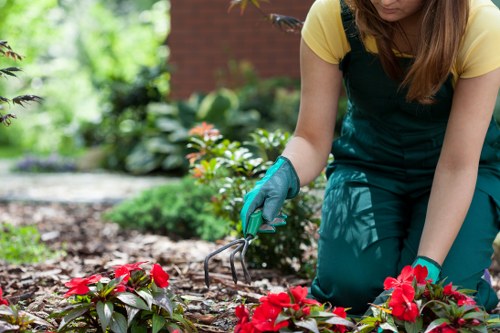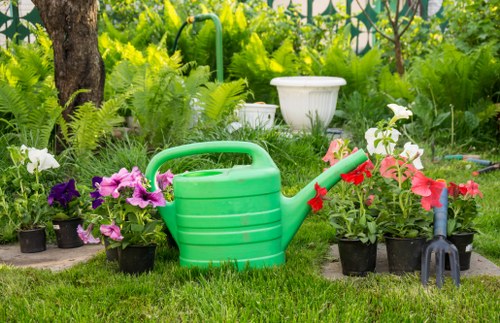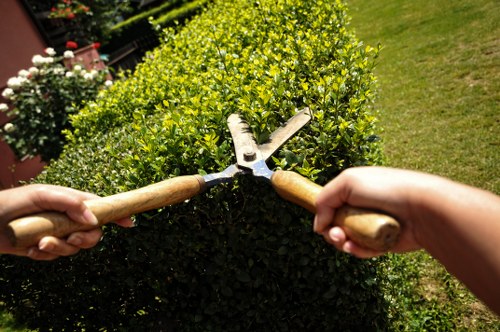Garden Fence Replacement in Garden Maintenance
Maintaining a beautiful garden requires attention to various elements, and one often overlooked aspect is the garden fence. A sturdy and aesthetically pleasing fence not only defines the boundaries of your garden but also adds to its overall charm and functionality. Over time, even the most well-maintained fences can show signs of wear and tear, making fence replacement a necessary part of garden maintenance.
Whether you're looking to enhance the privacy of your garden, improve its security, or simply update its appearance, replacing your old fence can make a significant difference. This comprehensive guide will walk you through the essential aspects of garden fence replacement, helping you make informed decisions to keep your garden looking its best.

Why Replace Your Garden Fence?
Fences play a crucial role in garden maintenance by providing structure, security, and aesthetic value. However, various factors can necessitate a fence replacement. Understanding these factors can help you determine the right time to replace your fence.
1. Structural Damage: Over time, fences can suffer from structural damage due to weather conditions, pests, or physical impacts. Cracks, rotting wood, or bent metal panels are clear indicators that your fence may need replacement.
2. Outdated Design: Trends in garden design evolve, and what once looked stylish may now appear outdated. Replacing your fence allows you to update the look of your garden to match current styles and personal preferences.

Choosing the Right Fence for Your Garden
Selecting the appropriate fence for your garden involves considering various factors such as material, design, and functionality. The right fence should complement your garden's aesthetics while providing the necessary benefits.
Material Options
Different materials offer unique advantages. Common fence materials include:
- Wood: Offers a natural and classic look. It’s versatile but requires regular maintenance.
- Metal: Durable and low-maintenance, metal fences like wrought iron or aluminum provide a modern appearance.
- Vinyl: Resistant to weather and pests, vinyl fences are easy to clean and maintain.
- Composite: Made from a mix of wood fibers and plastic, composite fences combine durability with aesthetic appeal.

The Fence Replacement Process
Replacing a garden fence involves several steps, from planning to installation. Understanding the process can help ensure a smooth and successful replacement.
Planning and Preparation
Start by measuring the area where the new fence will be installed. Choose the material and design that best fits your garden’s needs and aesthetics. Obtain any necessary permits if required by local regulations.
Removal of Old Fence
Carefully dismantle the existing fence, ensuring that you remove all components such as posts, panels, and rails. Proper disposal of the old materials is essential, so consider recycling or donating usable parts.
Installation of New Fence
Install the new fence by setting up the posts first, ensuring they are level and securely anchored. Attach the fence panels to the posts, following the manufacturer’s instructions for the best results. Whether you choose to DIY or hire professionals, ensure that the installation is done correctly to maximize the fence’s lifespan.

Maintenance Tips for Your New Fence
Once your new fence is installed, proper maintenance is crucial to preserve its appearance and functionality. Regular upkeep can prevent minor issues from becoming major problems.
Regular Inspections
Conduct routine inspections to check for any signs of damage or wear. Look for loose panels, rust spots, or signs of pests, and address them promptly to maintain the fence’s integrity.
Seasonal Maintenance
Depending on the material of your fence, seasonal maintenance might include painting, staining, or applying protective coatings. This helps shield the fence from harsh weather conditions and extends its lifespan.

Cost Factors in Fence Replacement
The cost of replacing a garden fence can vary based on several factors. Understanding these can help you budget appropriately and avoid unexpected expenses.
Material Costs
The choice of material significantly impacts the overall cost. For instance, wood tends to be more affordable initially but may require more maintenance, whereas metal or composite fences may have higher upfront costs but offer greater durability.
Labor Costs
Hiring professionals for fence installation can add to the total cost, but it ensures that the job is done correctly. DIY installations can save money but require time and skill.
Additional Expenses
Consider potential additional costs such as permits, tools, or accessories like gates and decorative elements. Planning for these can help you stay within your budget.
Benefits of Professional Fence Replacement Services
Opting for professional fence replacement services offers numerous advantages. Professionals bring expertise, ensuring that the fence is installed correctly and efficiently. They can also provide valuable insights into the best materials and designs suited for your garden.
Moreover, professionals handle all aspects of the replacement process, from removal of the old fence to the final installation, saving you time and effort. This allows you to enjoy a beautifully maintained garden without the hassle of managing the project yourself.
In conclusion, garden fence replacement is a vital part of garden maintenance that enhances both the functionality and aesthetic appeal of your outdoor space. By choosing the right materials, understanding the replacement process, and maintaining your new fence properly, you can ensure that your garden remains a beautiful and inviting retreat.
Ready to transform your garden with a new fence? Contact us today to schedule your fence replacement and take the first step towards a stunning garden!